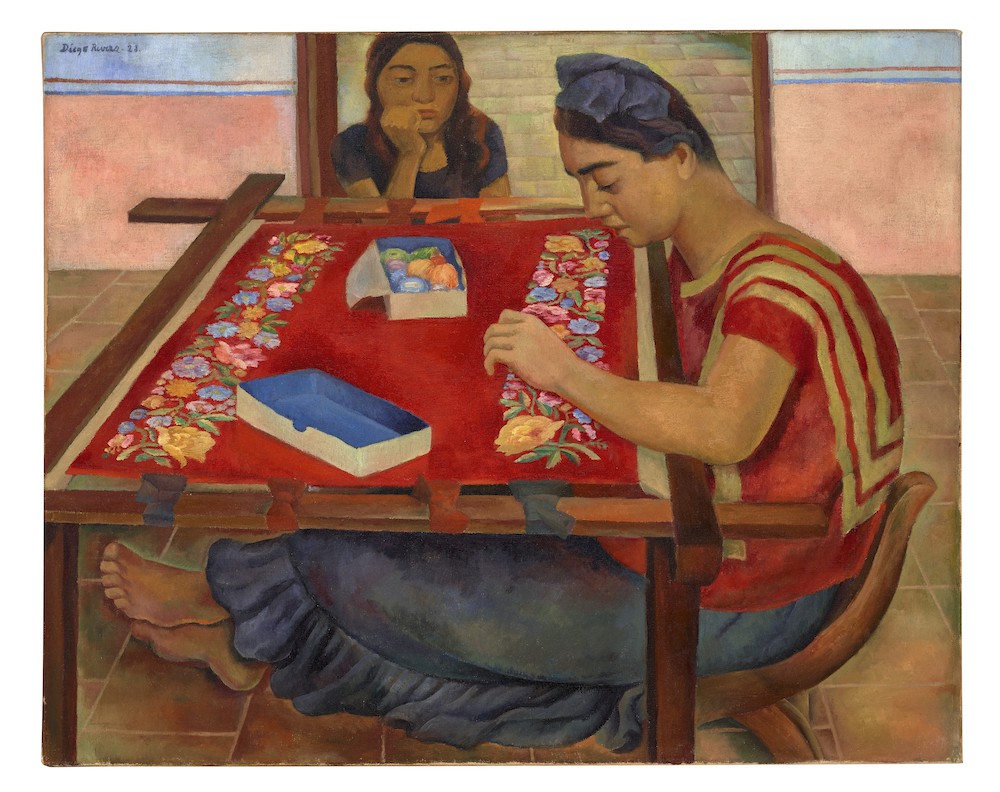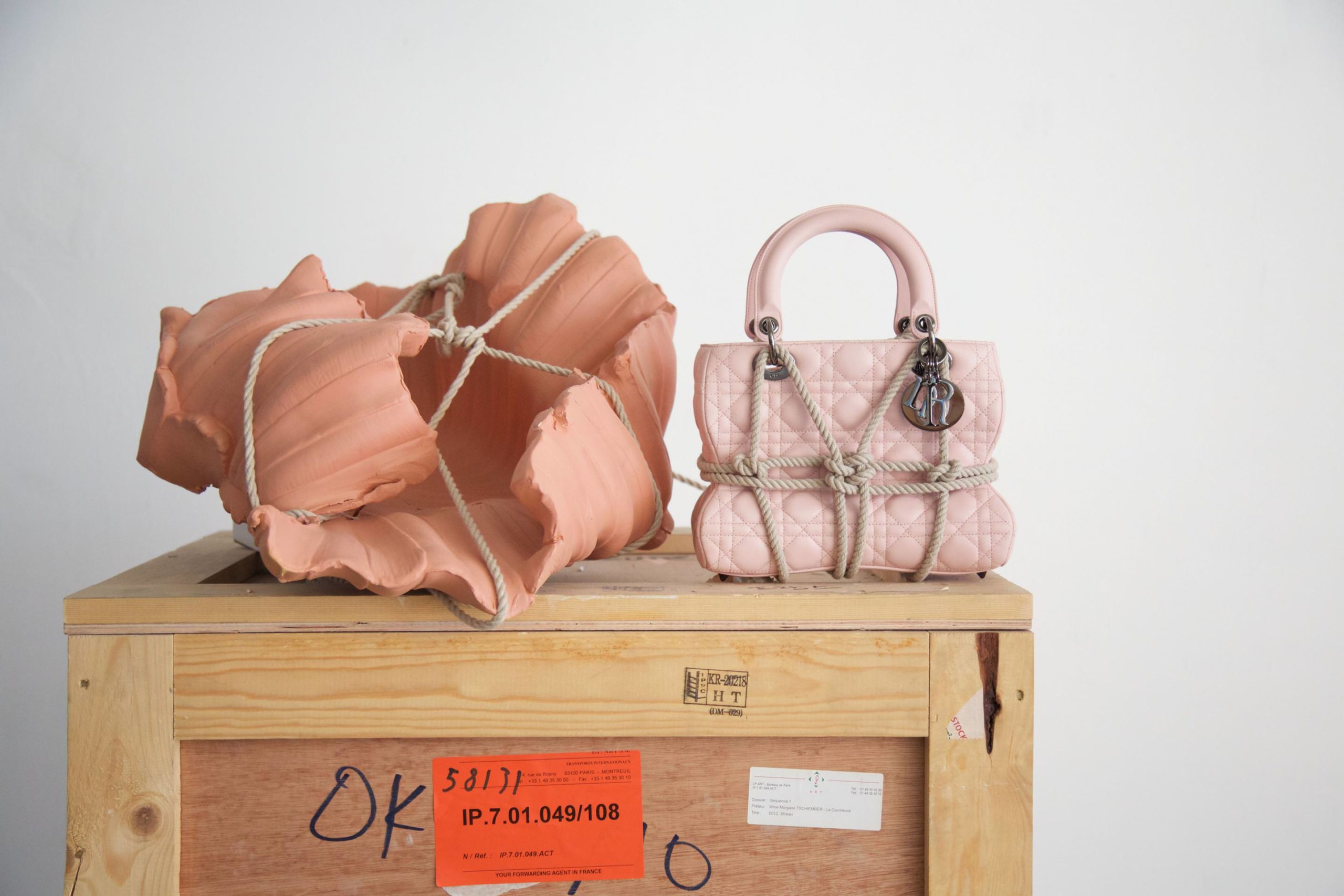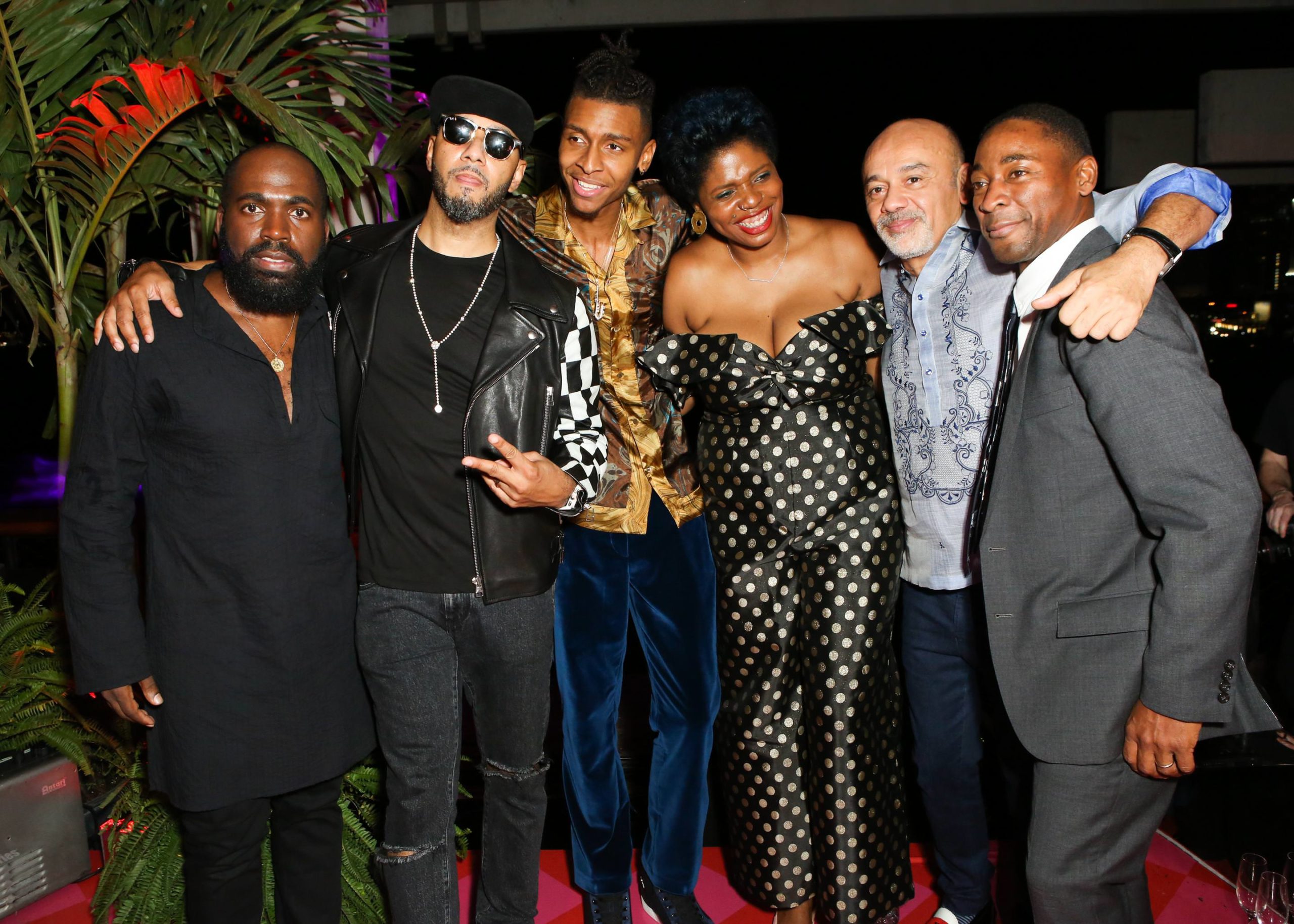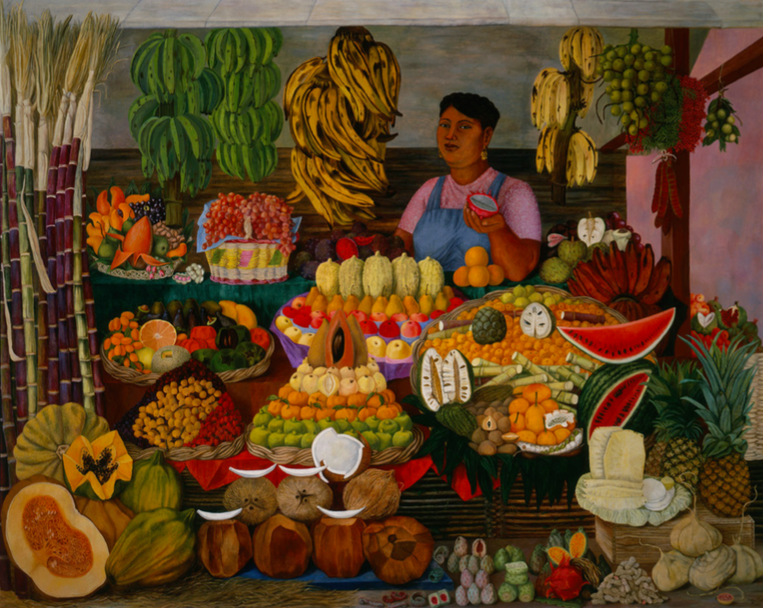This Friday, March 11, Christie’s hosts its Latin American sale, featuring standout works dating from the 19th century to today. Highlights include rediscovered masterpieces by Diego Rivera and Antonio Bandeira, as well as a monumental bronze by Fernando Botero. Notable paintings, sculptures, and drawings by Ibêre Camargo, Tomie Ohtake, Wifredo Lam, Matta, Claudio Bravo, Jesús Rafael Soto, Olga de Amaral, and others make up the rest of the exceptional offerings.
To learn more about the live auction, Whitewall caught up with Kristen France, a specialist in the Latin American Art department at Christie’s.
WHITEWALL: Leading the upcoming sale is Fernando Botero’s bronze sculpture “Man on a Horse” (1999) Can you tell us about this piece and its place in the artist’s oeuvre?
KRISTEN FRANCE: We are delighted to have this monumental work by Fernando Botero in our upcoming auction, and this is a particularly special moment to be featuring this work as travel has started to again pick up and we are seeing more and more clients coming to town to see the works in person. To be able to feature works right outside of our galleries at Rockefeller Center, in the heart of New York City is always a special moment for us.
Man on a Horse is a wonderful example of what makes Botero such a standout artist, not only within the category of Latin American art, but the broader global contemporary art scene. A draftsman at heart, Botero first turned to sculpture in the early 1970s, bringing his unique exploration of volume and proportion to the round. Throughout the ’80s and ’90s, he continued to refine his sculptures, exploring a variety of themes, from the female form, to animals such as dogs, cats, birds, to classical themes such as this, the horse and rider.
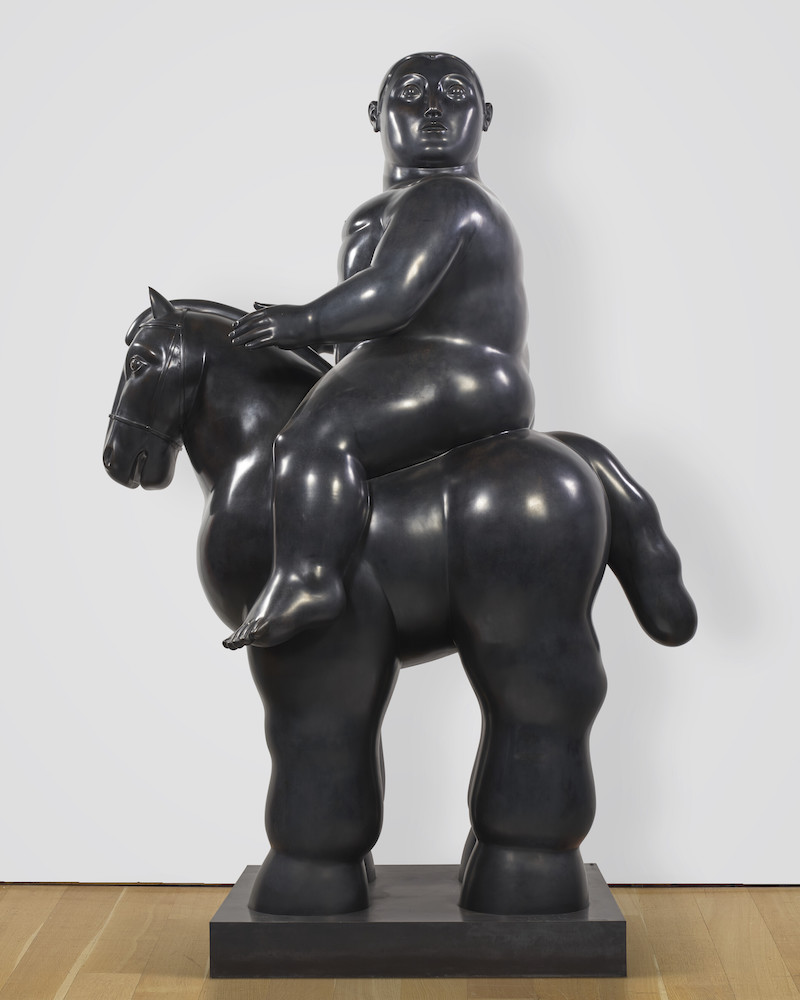
Fernando Botero, “Man on a Horse,” 1999, courtesy of Christie’s.
Botero has executed this particular subject of Man on a Horse in a variety of sizes, from tabletop to monumental in scale. Though tremendously prolific throughout his career, sculpture in particular, and those large and monumental in scale, are rarer to come by. The artist is about to celebrate his 90th birthday and though he is still active, he is no longer making sculpture, so this is a really special opportunity for any collector seeking to add a standout piece from one of the most recognized and celebrated artists of our time.
WW: The auction also includes a rediscovered Diego Rivera painting, La bordadora (1928)—also making its public debut. Can you tell us the story about its rediscovery and the work itself?
KF: This piece came to us early in the season, and it seemed almost too good to be true, both because of the impeccable history of ownership, and the rarity of such a top-quality work by the artist. The work was acquired shortly after its conception, and until now, was known only by a black and white photograph when it was illustrated in 1930 in a special edition of the journal, L’Art vivant. So, after 90 years of being in the same family’s collection, of James Feibelman, in New Orleans, this stunning work is once again coming to the public eye in all her glory. In the 1920s and 1930s of course, Diego Rivera was very well-known throughout the Americas, but his reach in the US, in particular, stretched beyond the major centers of New York and San Francisco. Perhaps not as discussed, is the interesting connection between Mexico and Rivera, and Louisiana, more specifically, New Orleans. From the 1920s through the 1950s artists, writers and intellectuals traveled to Mexico frequently, some seeking respite from the depression, others enamored by the culture and art of the country. In New Orleans in particular, the Arts and Crafts Club served as an important champion of Rivera’s work and that of other fellow compatriots, such as Rufino Tamayo and Emilio Amero for example, and in the late 1920s and early 1930s hosted exhibitions that included the work of these artists. We believe it was at this time that The Embroiderer was acquired by the Feibelman family.
In the early 1920s Rivera, along with fellow artists, José Clemente Orozco and David Alfaro Siqueiros (dubbed Los tres grandes), was called upon to join the post-Revolutionary cultural project of Mexico, which sought to reflect the history and traditions of the country through numerous public art commissions in Mexico City and beyond. At the urging of the Minister of Education, José Vasconcelos, Rivera traveled to the Isthmus of Tehuantepec, a region near Oaxaca, that even today boasts one of the most vibrant and thriving indigenous cultures, what for Rivera represented both a sort of “lost paradise” and the real heart and soul of Mexico. In La bordadora, or The Embroiderer, Rivera paints a portrait of a rich cultural tradition, passed down through generations of women. In terms of the subject matter and importance in the artist’s oeuvre, this work should be considered among the ranks of such masterpieces as Baile en Tehuantepec, currently on extended loan at MALBA, and The Rivals formerly part of the famed Rockefeller Collection that we had the honor of selling in 2018. What is most striking to me is that despite this subject matter, which is rich in local history and tradition, the composition feels so completely modern. The perspective is quite interesting—the geometry and angles, the lines of the tiled floor, the wall behind the young girl, and the table upon which the woman is working—all punctuated by the vibrant colors throughout. So, you have this very interesting dynamic going on within the picture that really brings it to life.
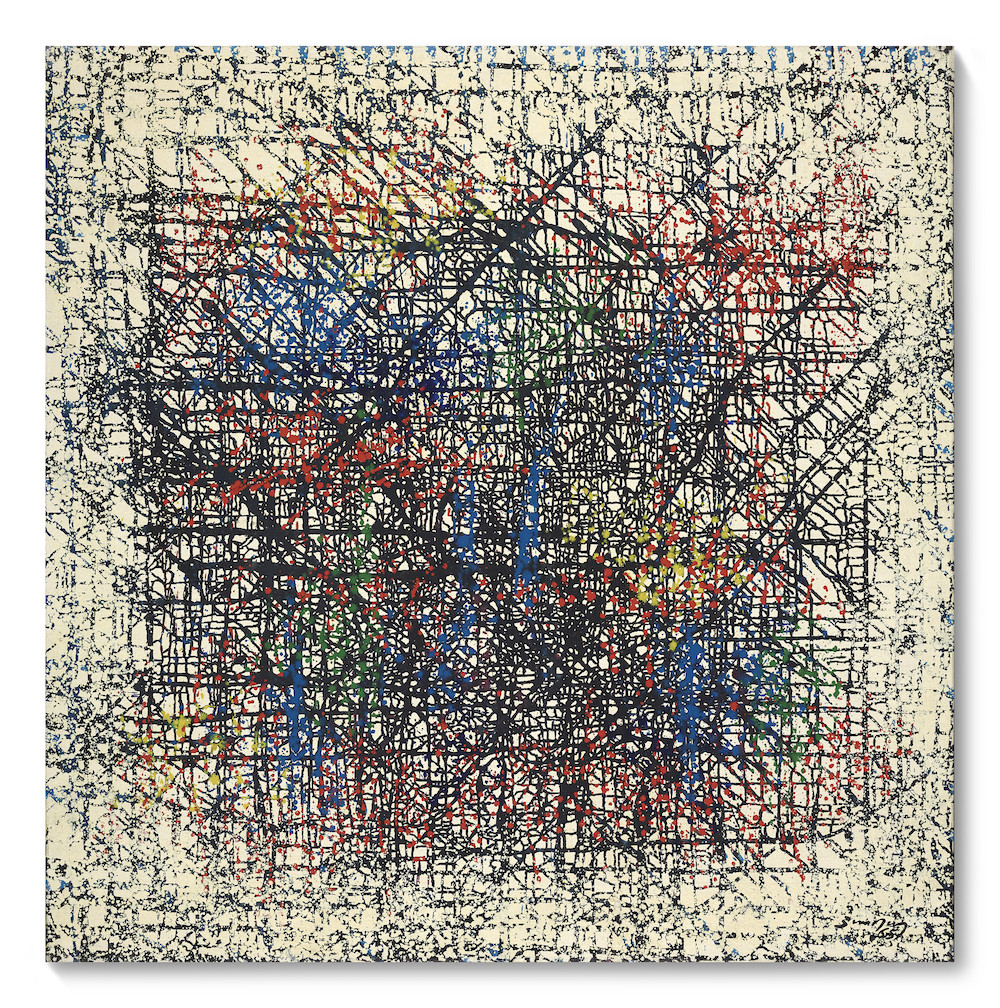
Antonio Bandeira, “Untitled,” 1965, courtesy of Christie’s.
WW: Another rediscovered work is Antonio Bandeira’s Untitled (1965) painting. Can you tell us about the significance of this find?
KF: We are particularly excited to be featuring this fantastic work by Brazilian artist, Antonio Bandeira both because we rarely see works from this artist sold in the US and works of this caliber nonetheless. The artist was only 45 when he passed, so in terms of his body of work, we are limited, and there really hasn’t been a top-quality piece like this since we set the auction record for the artist in 2011. This piece, painted just two years before the artist’s untimely death, is a prime example of Bandeira’s mature style for which he is best known and appreciated. These “living paintings” as they are called, are so incredibly dense with gestural lines and touches of color, applied to the canvas in a seemingly chaotic manner but that extend out to the edges of the picture almost in a grid-like pattern, imbuing the piece with a sense of order. It’s quite easy to lose one’s self in the picture.
The painting was a gift from the artist to the original owner, Nicole Roumengous de Festes de Saint André, who was very actively engaged in the vibrant social and cultural scene of Paris in the 1960s. It was during this time that she developed a friendship with Bandeira, who had moved to Paris in 1945 as a budding young artist, and continued to live and work there, splitting his time between Brazil and France, until his death in 1967. There is a lovely tribute to Mrs. Roumengous de Festes de Saint André written by her grandchildren, who have consigned the work to us.
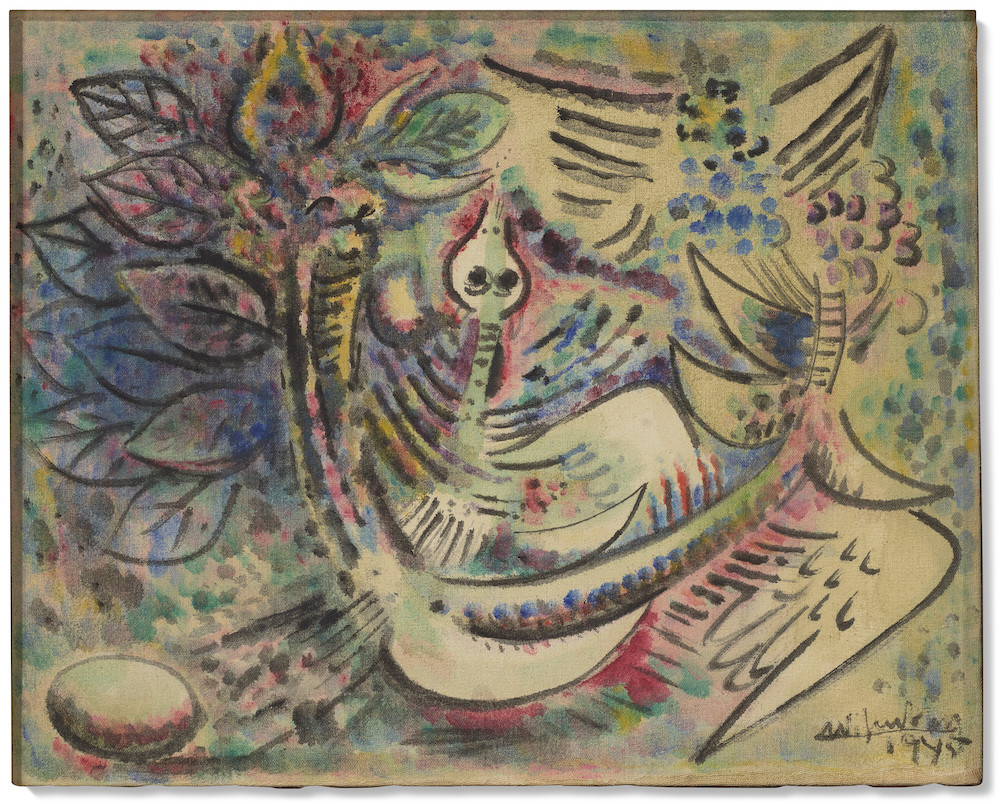
Wilfredo Lam, “Pomme Zombie,” 1945, courtesy of Christie’s.
WW: Pomme Zombie (1945) by Wilfredo Lam and Personajes en la sombra (1959) by Rufino Tamayo are such striking pieces. Can you tell us about these works?
KF: Wifredo Lam and Rufino Tamayo are such influential, stand-out artists in our category, whose reach stretches far beyond Latin American of course. Lam’s Pomme Zombie is a prime example of the artist’s unique brand of surrealism, grounded in a distinctly “New World” sensibility that effortlessly incorporated African diasporic cultural traditions and imagery with Cubist and Surrealist tendencies. After nearly two decades abroad in Europe, in 1941 Lam returned to his native Cuba; armed with the modernist sensibilities he encountered in Europe, his return marked a critical turning point in his career that focused on lo cubano. For Lam, that meant re-engaging the Afro-Cuban culture and traditions of his childhood, most specifically the African diasporic religions of Lucumí and Santería. His interests took him to Haiti, at the invitation of fellow Surrealists Pierre Mabille and André Breton. During his stay, he found tremendous inspiration in the culture and traditions, including Haitian Vodou. Pomme Zombie, a Haitian term for a toxic tropical fruit, figures into this body of work inspired by his travels to Haiti. What’s most striking about his works, always, is this interesting dynamism—the push and pull of figuration and abstraction that is so distinctly “Lam.” For me, his images are always so captivating, intoxicating even, in their magic and beauty.
Rufino Tamayo’s Personajes en la sombra is one of my favorite pieces in the sale, and in fact, was a personal favorite of the artist himself. Like Lam, Tamayo enjoyed tremendous critical success in Europe and the Americas, before returning to his native Mexico. Upon his return, his works took an increasingly humanist and universal dimension, focusing on this notion of man in relation to the cosmos. In Personajes en la sombra we see just that; this archetypal man and woman, paired down figures reduced to geometric forms presented against an ambiguous landscape. A brilliant, blue orb hovers between the figures, grounding us in a sense, in some space between the earth and the heavens, or real and imaginary if you will. As Tamayo himself explained, by simplifying his compositions—limiting the color palette to two or three colors at most, and further restricting shapes and form—he sought to draw out the very essence of his subject. The adage “less is more” rings true here. The result as we see in the present work, is something that appears ancient, almost pre-historic in its imagery, but at the same time so clearly modern and fresh.
WW: Can you tell us about some of the contemporary works that are included, as well?
KF: Beatriz González’s Vermeeriana I from 1964 is a wonderful picture, pertaining to a body of work she did in the 60s in which she looked to the Dutch Master, Vermeer, appropriating certain images or figures in his paintings, and using them as a jumping-off point to explore the relationships between color and form.
Tomás Sánchez’s Llegada del caminante a la laguna is a true tour-de-force. Measuring roughly 6 ½ feet high by 8 feet wide, his composition engulfs the viewer in lush vegetation. It’s an experience to stand in front of a work of this scale, and moreover, it is extremely rare for us to see a painting of this scale from the artist on the market.
Olga de Amaral is another artist who continues to garner attention with her wonderful compositions that transform the tradition of weaving to something that defies definition or categorization. Her Cesta Lunar 66 comes to us from the collection of poet and art critic Ricardo Pau-Llosa who has really been influential in supporting and promoting Latin American art and artists since the 1970s.
Eduardo Terrazas is an artist whose work we rarely see at auction, so I’m particularly excited to see such a wonderful example in our sale.
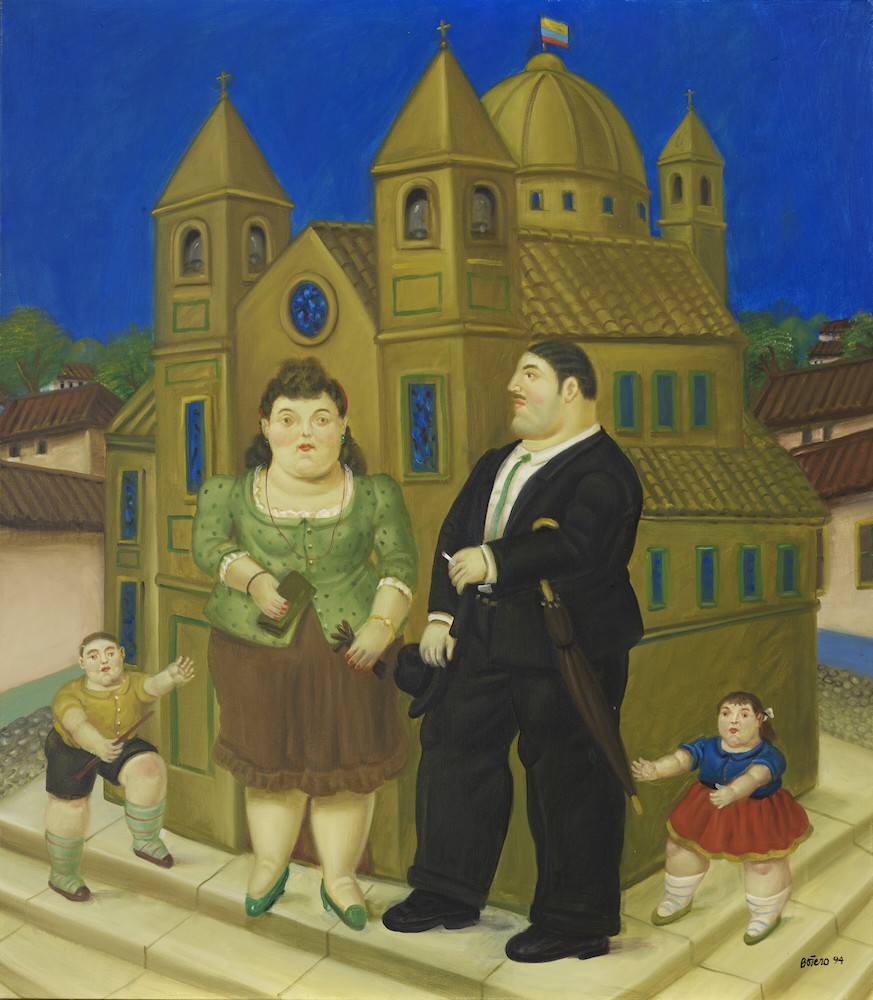
Fernando Botero, Frente a la catedral, 1994, courtesy of Christie’s.
WW: Who are the contemporary Latin American artists to watch at the moment on the secondary market, for you?
KF: Tomás Sánchez is one. He just had his first solo exhibition this year in New York since 2005, which received great reviews. I really love his works on paper, and I think people should look more closely at this body of work.
Of course, Olga de Amaral is another artist to continue to follow, whose visibility continues to grow. Her works are just so stunning and appeal to all types of collectors.
Zilia Sanchez is another artist whose work I think will continue to garner attention and interest among serious collectors. Her 2019-2020 exhibition at El Museo del Barrio has certainly helped to reinvigorate interest in her work on the secondary market. Julio Galán is an artist that I think is wildly underappreciated but whose paintings are so fascinating. His compositions are rife with autobiographical references mixed with myth and mystery which are just so intriguing and striking, at times bordering on unsettling, but nevertheless, they always leave an indelible mark on the viewer. Sadly he suffered an untimely death at the age of 48, leaving only a limited body of work but when they do come in for sale, they always garner a good amount of attention.


